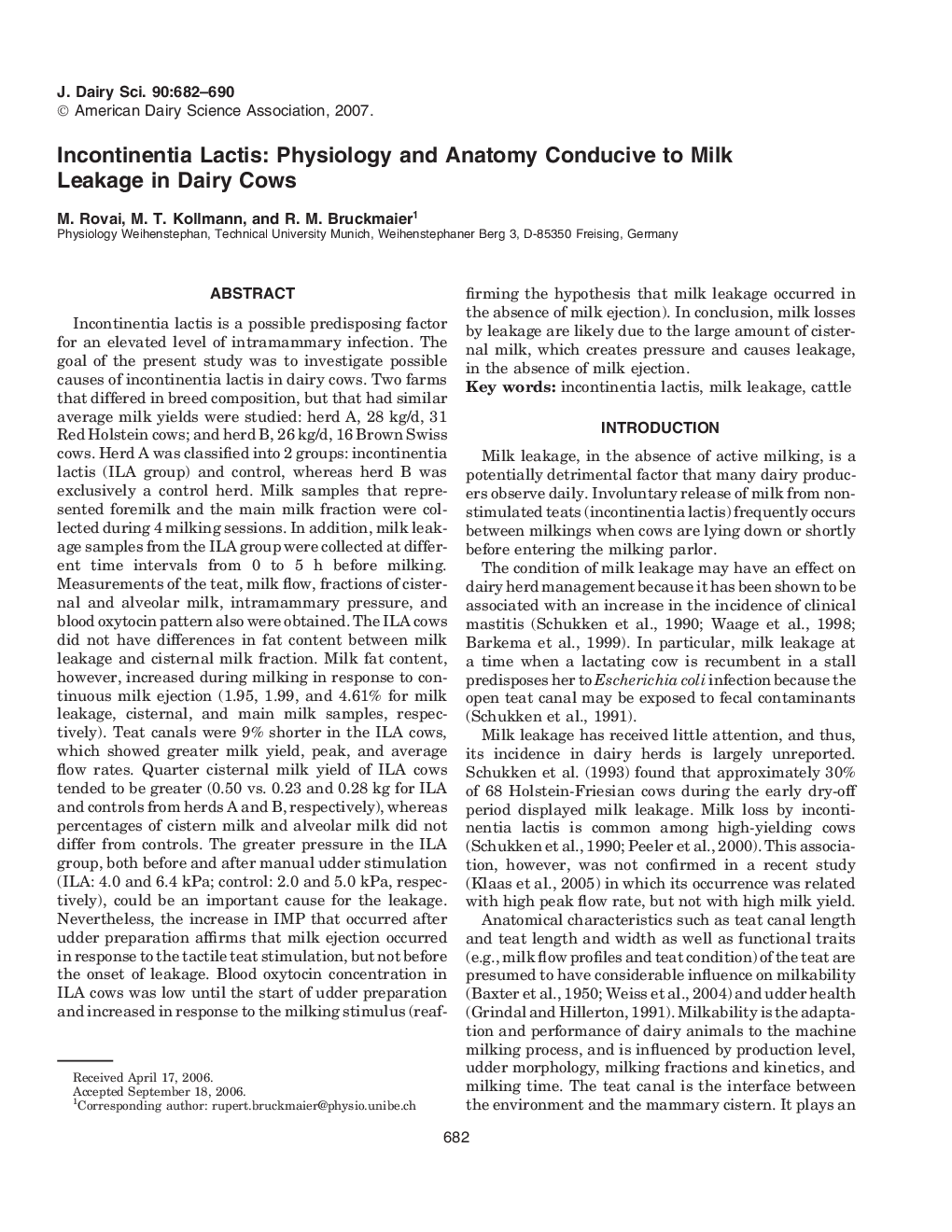| کد مقاله | کد نشریه | سال انتشار | مقاله انگلیسی | نسخه تمام متن |
|---|---|---|---|---|
| 2440333 | 1108116 | 2007 | 9 صفحه PDF | دانلود رایگان |

Incontinentia lactis is a possible predisposing factor for an elevated level of intramammary infection. The goal of the present study was to investigate possible causes of incontinentia lactis in dairy cows. Two farms that differed in breed composition, but that had similar average milk yields were studied: herd A, 28 kg/d, 31 Red Holstein cows; and herd B, 26 kg/d, 16 Brown Swiss cows. Herd A was classified into 2 groups: incontinentia lactis (ILA group) and control, whereas herd B was exclusively a control herd. Milk samples that represented foremilk and the main milk fraction were collected during 4 milking sessions. In addition, milk leakage samples from the ILA group were collected at different time intervals from 0 to 5 h before milking. Measurements of the teat, milk flow, fractions of cisternal and alveolar milk, intramammary pressure, and blood oxytocin pattern also were obtained. The ILA cows did not have differences in fat content between milk leakage and cisternal milk fraction. Milk fat content, however, increased during milking in response to continuous milk ejection (1.95, 1.99, and 4.61% for milk leakage, cisternal, and main milk samples, respectively). Teat canals were 9% shorter in the ILA cows, which showed greater milk yield, peak, and average flow rates. Quarter cisternal milk yield of ILA cows tended to be greater (0.50 vs. 0.23 and 0.28 kg for ILA and controls from herds A and B, respectively), whereas percentages of cistern milk and alveolar milk did not differ from controls. The greater pressure in the ILA group, both before and after manual udder stimulation (ILA: 4.0 and 6.4 kPa; control: 2.0 and 5.0 kPa, respectively), could be an important cause for the leakage. Nevertheless, the increase in IMP that occurred after udder preparation affirms that milk ejection occurred in response to the tactile teat stimulation, but not before the onset of leakage. Blood oxytocin concentration in ILA cows was low until the start of udder preparation and increased in response to the milking stimulus (reaffirming the hypothesis that milk leakage occurred in the absence of milk ejection). In conclusion, milk losses by leakage are likely due to the large amount of cisternal milk, which creates pressure and causes leakage, in the absence of milk ejection.
Journal: Journal of Dairy Science - Volume 90, Issue 2, February 2007, Pages 682–690